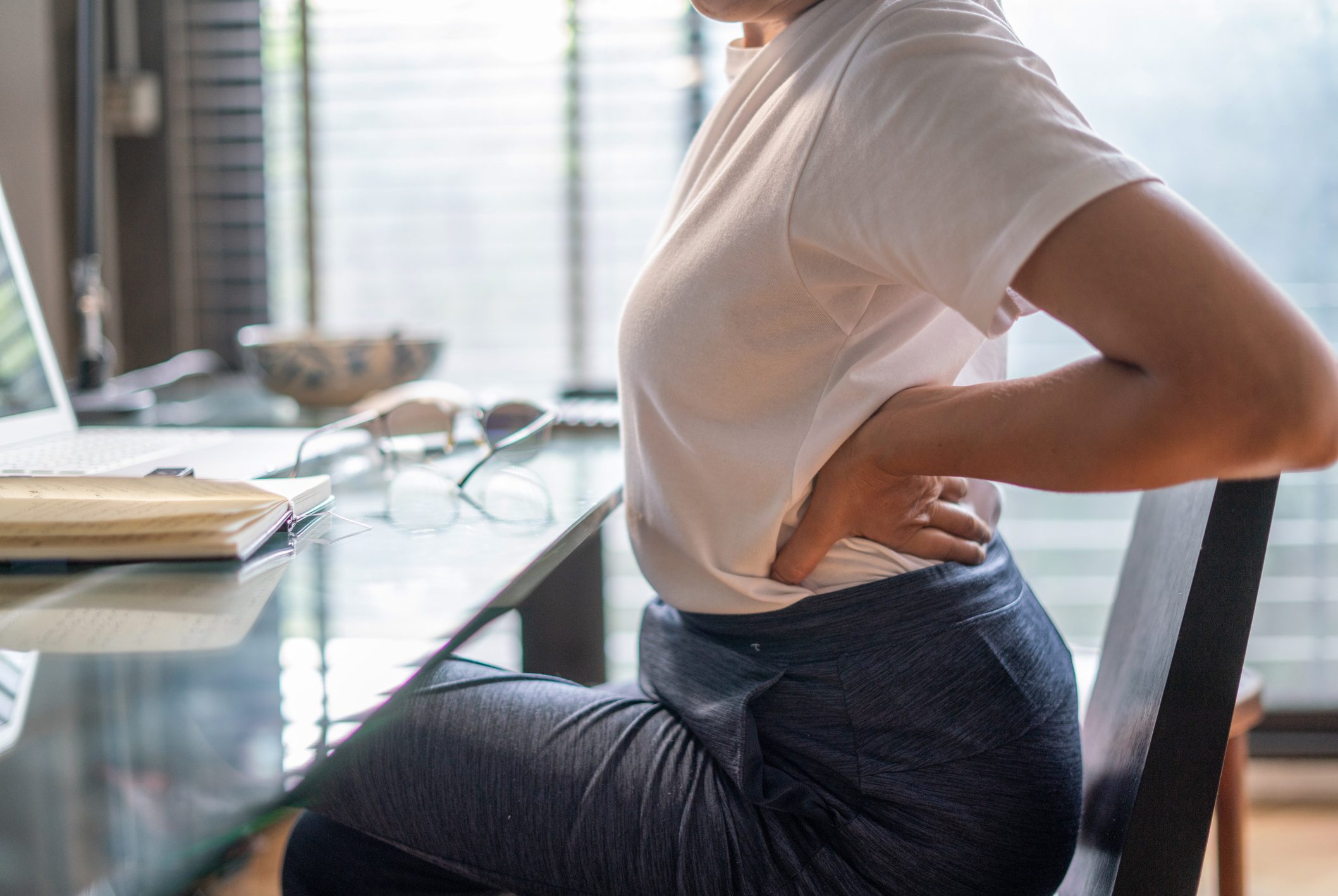Suddenly that standup desk or mini-treadmill might seem like a very worthy splurge, according to findings by researchers in Asia.

Doing This During the Workday May Increase Risk of Heart Disease Death by 34%, Says New Study

There’s a new adage that’s gaining traction in medicine for its succinct summary of a growing health problem: “Sitting is the new smoking,” some doctors have taken to saying.
It’s a non-exaggeration that’s backed by increasing science: According to the Mayo Clinic, when researchers analyzed 13 studies about the effects of prolonged sitting, they found that people who sat for more than eight hours per day without breaks for physical activity saw mortality trends that were similar to the risk from obesity and, yes, smoking.
Like smoking, leading a sedentary lifestyle—in other words, sitting a lot—is shown to raise the risk of several chronic health conditions, including heart disease, obesity, cancer, hypertension, diabetes, and more. Chronic pain, including in the knees, back, and joints, is also common among those who sit for too long.
A recent study is highlighting one of the most hazardous outcomes of “occupational sitting,” or sitting for long periods of time throughout the workday. Published in the American Medical Association’s journal JAMA Open Network, doctoral researchers in Taiwan found that people who predominantly sat at work experienced a significantly higher risk of dying from cardiovascular causes.

Based out of Taiwan’s Taipei Medical University, the study tracked 481,688 subjects with a mean age of 39 over a follow-up period of 13 years. During that time, the researchers recorded 26,257 deaths from various causes. “Individuals who predominantly engaged in sitting at work exhibited a higher risk of mortality from all causes (16%) and cardiovascular disease (34%) compared with those who predominantly did not sit,” the researchers reported.
The researchers note that people who predominantly sit at work should aim to introduce an additional 15 to 30 minutes of physical activity to their routines per day to mitigate the increased health risks of sitting.
Other effective strategies the researchers state, are implementing a wearable device that reminds you to stand periodically, or another rising trend in office accessories: “Practical solutions such as standing tables and activity-permissive workstations can also reduce sedentary time at work effectively without compromising work performance,” the researchers conclude.
The authors note that while occupational sitting is widely considered “normal” despite its damaging effect on health outcomes, they hope that more research will help to “denormalize this common behavior, similar to the process of denormalizing smoking.”
Some national experts say that if you sit all day, getting the minimum amount of recommended exercise may not be enough to offset its impact. The Centers for Disease Control and Prevention (CDC) advises getting at least 150 minutes of moderate-intensity aerobic exercise per week—but this assumes that you’re also moving in smaller ways throughout the day. That change will have to begin one person and one day at a time, as each of us makes the conscious effort to sit less, move more, and rise from that desk chair regularly.
For daily wellness updates, subscribe to The Healthy by Reader’s Digest newsletter and follow The Healthy on Facebook and Instagram. Keep reading:




















